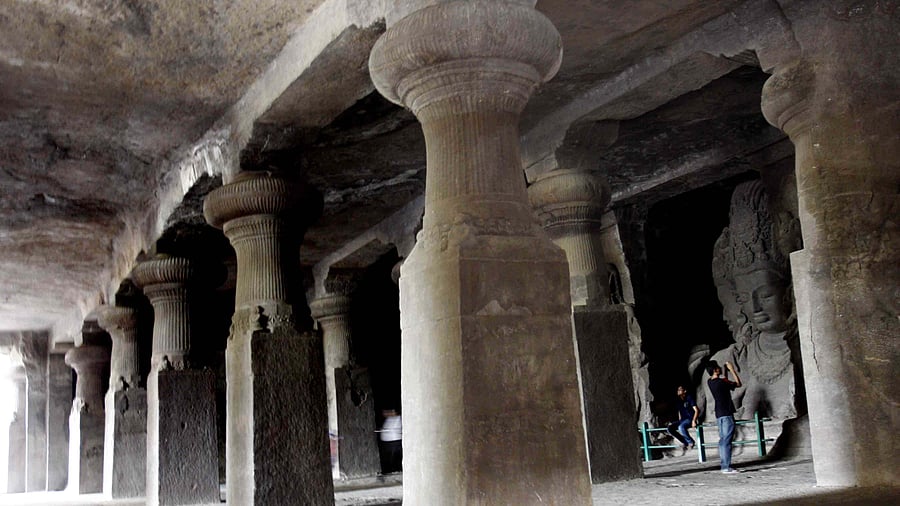
Elephnata Caves
Credit: Special Arrangement
Mumbai: For tourists, the boat service is the only option to visit the UNESCO World Heritage Site of Elephanta Caves.
The unprecedented boat tragedy involving a ferryboat which was dashed by an Indian Navy speedboat, has once again raised the safety issue.
There are regular launch services from the Gateway of India at Apollo Bunder in Mumbai to the Gharapuri Island in Uran in the neighbouring Raigad district, which houses the Elephanta Caves.
The services are run by Gateway Elephanta Jal-Vahatuk Sahakari Sanstha Maryadit.
According to estimates, there are 100-odd ferry boats, which make 10-15 trips daily with capacity ranging from 50 to 100 people on board, depending on the season.
“What has happened is unfortunate. We never could imagine that such a thing would happen,” said a Mumbai-based tour guide, who regularly takes international passengers to the Elephanta Caves.
“The journey too is interesting as one can see Mumbai from the Arabian Sea,” said Ajit Joshi, an expert on Mumbai.
Elephanta Caves, which comes under the Archaeological Survey of India, is located around 8 to 9 nautical miles from Gateway of India.
The island is named after a colossal elephant found in the island, which is popularly known as Gharapuri.
At present, the statue of elephant is housed at Veermata Jijabai Bhosale Udyan & Zoo in Mumbai.
"These archaeological remains reveal evidence of occupation from as early as the 2nd century BC. The rock-cut Elephanta Caves were constructed about the mid-5th to 6th centuries AD. The most important among the caves is the great Cave 1, which measures 39 metres from the front entrance to the back. In plan, this cave in the western hill closely resembles Dumar Lena cave at Ellora, in India. The main body of the cave, excluding the porticos on the three open sides and the back aisle, is 27 metres square and is supported by rows of six columns each,” according to UNESCO website (https://whc.unesco.org/en/list/244/).
The 7-metre-high masterpiece “Sadashiva” dominates the entrance to Cave 1. The sculpture represents three aspects of Shiva: the Creator, the Preserver, and the Destroyer, identified, respectively, with Aghora or Bhairava (left half), Taptapurusha or Mahadeva (central full face), and Vamadeva or Uma (right half). Representations of Nataraja, Yogishvara, Andhakasuravadha, Ardhanarishwara, Kalyanasundaramurti, Gangadharamurti, and Ravanaanugrahamurti are also noteworthy for their forms, dimensions, themes, representations, content, alignment and execution.
“Among the cave excavations, the Cave 1 is the most impressive which represents the evolved Brahmanical rock-cut architecture. The cave is also famous for the exquisite and vibrant sculptures. On plan it almost resembles the Dumar Lena (Cave 29) of Ellora. The cave has a main entrance on the north with two other openings on the east and west respectively and a central hall with six rows of pillared columns, six in each row except on the western corner, where a shrine of lingam is provided,” according to the ASI webpage (https://asi.nic.in/pages/WorldHeritageElephantaCaves).